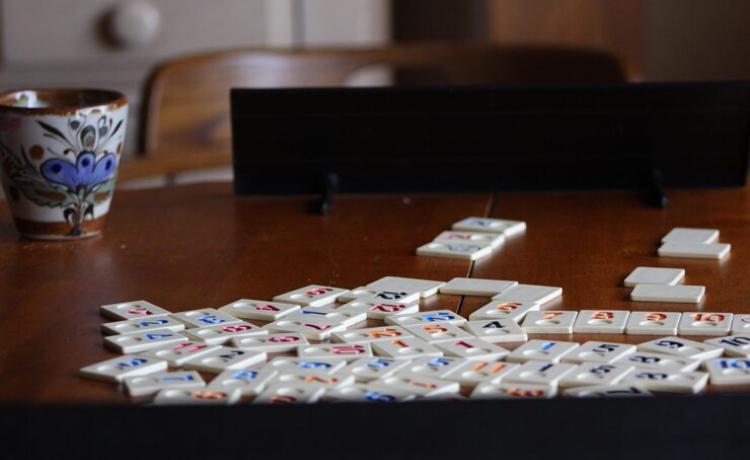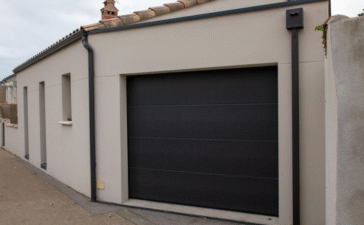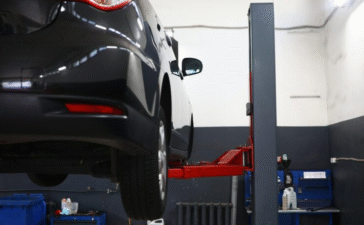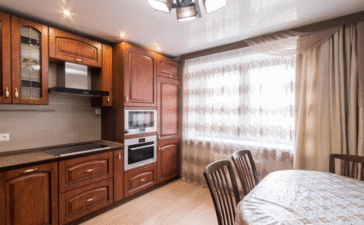Card tables have evolved far beyond their traditional role as simple gaming surfaces. These versatile pieces of furniture now serve multiple functions in modern homes, from hosting dinner parties to creating temporary workspaces. Whether you’re planning a family game night, organizing an outdoor event, or need flexible furniture solutions for small spaces, the right card table and can transform any area into a functional gathering spot.
The beauty of card tables lies in their adaptability. Unlike fixed dining tables or bulky furniture pieces, card tables offer the perfect balance of functionality and convenience. They provide a stable surface when you need it and fold away neatly when you don’t, making them invaluable for apartments, offices, and homes where space optimization matters.
Understanding what makes a quality card table can help you choose one that serves your needs for years to come. From material considerations to design features, this comprehensive guide will walk you through everything you need to know about selecting, using, and maintaining the perfect card table for your lifestyle.
What is a Card Table and Why Should You Own One?
A card table is a compact, typically square or rectangular table designed primarily for card games and other tabletop activities. Traditional card tables measure around 32 to 36 inches square, providing comfortable seating for four people. However, modern card tables come in various sizes and shapes to accommodate different needs and spaces.
The primary advantage of owning a card table lies in its exceptional versatility. These tables adapt to countless situations where you need temporary surface space. During holiday gatherings, a folding card table and with a wood surface can serve as additional dining space. For children’s activities, it becomes an ideal craft station. In professional settings, these tables create instant meeting spaces or display areas for presentations.
Card tables excel in their space-saving design. Most models fold completely flat, allowing storage in closets, under beds, or against walls. This portability makes them perfect for people who frequently move or live in smaller spaces. Unlike permanent furniture, you can easily transport these tables between rooms or take them outdoors for events.
The cost-effectiveness of card tables makes them accessible to most budgets. Even high-quality models typically cost less than traditional dining furniture while offering similar functionality when needed. This affordability allows families to own multiple tables for large gatherings without significant investment.
Key Features to Look for When Buying a Card Table
Material selection significantly impacts your card table’s durability, appearance, and maintenance requirements. Wood remains the most popular choice for durable card table materials, offering natural beauty and long-lasting performance. Hardwood surfaces resist scratches and provide excellent stability, though they require more maintenance than synthetic alternatives.
Plastic tables offer superior weather resistance and easy cleaning, making them ideal for outdoor use and households with children. High-density polyethylene surfaces resist stains, scratches, and UV damage. However, plastic may lack the aesthetic appeal of wood and can feel less substantial during use.
Metal construction, particularly steel frames, provides exceptional durability and weight capacity. These tables often feature powder-coated finishes that resist rust and scratching. The combination of metal frames with wood or laminate tops creates sturdy, long-lasting tables suitable for heavy use.
Size considerations go beyond simple measurements. A compact card table and measuring 30 inches square comfortably seats four adults for card games but may feel cramped for dining. Larger models reaching 36 inches or rectangular shapes provide more surface area and can accommodate six people comfortably. Consider your primary use case and available space when selecting size.
Storage requirements vary significantly between models. The best space-saving card tables fold completely flat with legs that nest within the table surface. Some designs feature removable legs or tabletops that separate entirely. Folding mechanisms should operate smoothly and lock securely in both open and closed positions. Quality hinges and locking systems prevent wobbling during use and ensure the table stays closed during storage.
Weight capacity represents another crucial factor. Standard tables typically support 200 to 300 pounds, sufficient for typical use. Heavy-duty models can handle 500 pounds or more, making them suitable for commercial applications or situations requiring maximum durability.
Popular Card Table Styles and Designs
Modern folding card table designs emphasize clean lines, neutral colors, and contemporary materials. These tables often feature sleek metal frames paired with laminate or engineered wood surfaces. Minimalist designs blend seamlessly with contemporary home decor while maintaining full functionality. Some contemporary card table designs incorporate adjustable height mechanisms, allowing use as both standard and counter-height surfaces.
Color options have expanded beyond traditional brown and black. Modern tables come in white, gray, and even bold colors to match specific decor schemes. Textured surfaces that mimic natural materials provide visual interest while maintaining easy maintenance.
Traditional wooden card tables remain popular for their timeless appeal and natural beauty. These vintage-style card tables often feature rich wood finishes like cherry, oak, or walnut. Classic designs may include decorative elements such as carved legs or inlaid playing card motifs on the surface.
Rustic styles incorporate distressed finishes and farmhouse-inspired designs. These tables work particularly well in country-themed homes or outdoor settings where a weathered appearance adds character rather than detracting from aesthetics.
Customizable features represent a growing trend in card table design. Adjustable card table models allow height modification to accommodate different seating arrangements or user preferences. Some tables feature interchangeable tops, allowing you to switch between gaming surfaces with felt backing and smooth surfaces for dining or activities.
Multi-functional designs blur the line between card tables and other furniture types. Some models include built-in cup holders, chip storage, or felt gaming surfaces that reverse to smooth dining surfaces. These custom card table options provide enhanced functionality while maintaining the basic folding convenience.
The Best Card Table and for Various Needs
Indoor applications require tables that balance stability, aesthetics, and functionality. The best card tables for game night feature smooth, level surfaces that won’t interfere with card dealing or game piece movement. Felt-lined surfaces provide excellent grip for cards while protecting the underlying table from scratches.
For family gatherings and casual dining, indoor folding card tables with attractive finishes work well. Wood-grain laminates provide the appearance of solid wood while offering easy maintenance and stain resistance. Tables with rounded corners enhance safety around children while maintaining full functionality.
Professional indoor settings benefit from tables with neutral colors and commercial-grade construction. These models typically feature stronger frames and more durable surfaces to withstand frequent use and setup.
Outdoor applications demand weather-resistant construction and enhanced durability. Outdoor card tables must resist moisture, temperature fluctuations, and UV exposure. Plastic surfaces excel in these conditions, maintaining their appearance and functionality despite weather exposure.
Aluminum frames provide excellent outdoor performance, resisting rust while remaining lightweight for easy transport. Some weatherproof folding tables feature drainage holes to prevent water accumulation and quick-dry surfaces that shed moisture rapidly.
For camping and tailgating, portability becomes paramount. The most portable outdoor tables fold into compact packages with integrated carrying handles or cases. Lightweight materials reduce transport burden while maintaining adequate strength for typical outdoor use.
Multi-purpose functionality appeals to users who want maximum value from their furniture investment. A multi-purpose folding table can serve as a card table during game nights, a dining surface during parties, and a craft table for projects. Some models include height adjustment mechanisms that allow use with both standard chairs and bar stools.
Card table dining options often feature larger surfaces and enhanced weight capacity to accommodate place settings and food service. Rectangular designs provide more flexible seating arrangements than traditional square tables while maintaining the folding convenience.
Leading Card Table Brands and Where to Buy Them
Flash Furniture has established itself as a leading manufacturer of commercial and residential folding furniture. Flash Furniture card tables feature heavy-duty construction, commercial-grade materials, and competitive pricing. Their product line includes both basic utility models and premium options with enhanced features and finishes.
The company’s reputation stems from consistent quality control and comprehensive warranty coverage. Most Flash Furniture models include multi-year warranties that cover manufacturing defects and normal wear issues. Their distribution network ensures parts availability and customer service support.
SKONYON specializes in modern, feature-rich folding tables with emphasis on user convenience and aesthetic appeal. The best card tables from SKONYON often include innovative folding mechanisms, enhanced stability features, and contemporary designs. Their products typically target the residential market with focus on style and functionality.
SKONYON tables often incorporate premium materials like powder-coated steel frames and high-grade laminate surfaces. Their design team emphasizes easy setup and storage, with many models featuring tool-free assembly and compact folding profiles.
Peakform focuses on outdoor and recreational furniture, including specialized folding tables for camping, tailgating, and outdoor events. Their products emphasize portability, weather resistance, and rugged construction. Peakform tables often include features like adjustable legs for uneven surfaces and integrated storage solutions.
Online purchasing offers the widest selection and competitive pricing. When you buy card tables online, you can compare features, read customer reviews, and access detailed specifications. Amazon provides extensive selection with customer reviews and fast shipping options. Target offers curated selections with competitive pricing and convenient store pickup options.
Local retailers provide the advantage of hands-on evaluation before purchase. Home improvement stores like Home Depot and Lowe’s stock basic models suitable for utility use. Furniture stores often carry higher-end options with better aesthetics and enhanced features. Warehouse clubs like Costco and Sam’s Club offer bulk purchasing options and competitive pricing on commercial-grade models.
For the best card table deals, timing your purchase around seasonal sales events can provide significant savings. Back-to-school periods, end-of-summer clearances, and holiday sales often feature folding table promotions.
Price Range and Value for Money
Budget-conscious shoppers can find quality affordable card table and under fifty dollars. These budget folding tables typically feature basic construction with plastic surfaces and steel tube frames. While they may lack premium aesthetics, properly selected budget models provide reliable functionality for occasional use.
Entry-level wooden card tables start around sixty to eighty dollars, offering improved appearance and surface quality. These models often feature wood-grain laminates over particleboard cores with basic folding mechanisms.
Mid-range options between one hundred and two hundred dollars provide enhanced durability, better materials, and improved aesthetics. These tables often feature solid wood surfaces, powder-coated metal frames, and more sophisticated folding mechanisms. The additional investment typically results in longer service life and better appearance.
Premium folding card tables and luxury card table options can exceed three hundred dollars. These models justify their cost through superior materials, enhanced features, and exceptional build quality. Premium tables might include solid hardwood construction, commercial-grade hardware, and specialized features like adjustable height or reversible surfaces.
Professional-grade tables for commercial use represent the highest price tier. These models feature reinforced construction, extended warranties, and materials designed for intensive use. While expensive, they provide excellent value for businesses or individuals requiring maximum durability.
When evaluating value, consider your usage patterns and longevity requirements. A table used weekly justifies higher investment than one needed occasionally. Quality construction often costs more initially but provides better long-term value through extended service life and maintained appearance.
How to Maintain and Care for Your Card Table
Proper maintenance extends your card table’s service life and preserves its appearance. Material-specific care requirements vary significantly between wood, plastic, and metal surfaces.
When learning how to clean wood card table and surfaces, use mild soap solutions and immediately dry all surfaces to prevent moisture damage. Avoid harsh chemicals that can damage finishes or cause discoloration. Periodic application of appropriate wood conditioners maintains surface appearance and prevents cracking.
For laminate surfaces, standard household cleaners work well for routine maintenance. Avoid abrasive cleaners that can scratch protective coatings. Stubborn stains often respond to baking soda paste applied gently with soft cloths.
Cleaning plastic folding tables requires minimal effort. These surfaces resist most stains and clean easily with soap and water. For outdoor tables, periodic deep cleaning with mild bleach solutions removes algae and mildew without damaging the material.
Metal components need regular inspection for signs of rust or corrosion. Clean metal frames with appropriate cleaners and apply touch-up paint to any damaged areas. Lubricate folding mechanisms periodically to ensure smooth operation and prevent premature wear.
Storage practices significantly impact table longevity. When storing folding card tables, ensure surfaces are completely clean and dry to prevent mold, mildew, or staining. Store tables in climate-controlled environments when possible to minimize temperature and humidity fluctuations.
Protective covers or storage bags prevent dust accumulation and surface damage during storage. Avoid storing heavy objects on folded tables, as this can damage folding mechanisms or create permanent deformation.
These card table maintenance tips help identify potential problems early. Regularly inspect folding mechanisms for smooth operation and secure locking. Tighten loose hardware before it causes structural damage. Address surface damage promptly to prevent expansion and more costly repairs.
Also Check: “side tables and“
Why Card Tables Remain Essential Furniture
Card tables represent one of furniture’s most practical innovations. Their combination of functionality, portability, and affordability makes them valuable additions to virtually any living or working space. From hosting memorable game nights to providing flexible workspace solutions, these tables adapt to countless situations while requiring minimal storage space.
The key to selecting the right card table lies in honestly assessing your needs, available space, and budget constraints. Consider how frequently you’ll use the table, where you’ll store it, and what activities it needs to support. A table that serves multiple purposes often provides better value than specialized models with limited applications.
Quality construction pays dividends over time through enhanced durability and maintained appearance. While budget options serve immediate needs, investing in better materials and construction often proves more economical long-term. Consider your usage patterns and choose accordingly.
Frequently Asked Questions
What is the difference between a regular table and a card table?
Card tables are specifically designed for portability and space-saving storage. They typically measure 32-36 inches square, providing comfortable seating for four people. Unlike regular tables, card tables fold completely flat and weigh significantly less, making them easy to move and store. Regular dining tables offer more surface area and permanent placement but lack the flexibility and convenience of folding models.
Are folding card tables strong enough for heavy use?
Quality folding card tables can absolutely handle heavy use when properly selected. Commercial-grade models support 300-500 pounds and feature reinforced construction designed for frequent setup and breakdown. The key lies in choosing tables with appropriate weight ratings for your intended use. Heavy-duty models with steel frames and quality locking mechanisms provide reliability comparable to permanent furniture.
Can a card table be used as a dining table?
Card tables work excellently as temporary dining surfaces for up to four people. Standard 36-inch models provide adequate space for place settings, though they may feel more intimate than traditional dining tables. For regular dining use, consider rectangular models that offer more surface area and can accommodate additional guests. The folding convenience makes them perfect for holiday overflow seating or apartment living.
How much should I spend on a good card table?
Expect to spend fifty to one hundred fifty dollars for a quality card table suitable for regular home use. Budget models under fifty dollars work for occasional use but may lack durability for frequent setup. Premium models exceeding two hundred dollars offer enhanced materials and features but provide diminishing returns for typical residential applications. Consider your usage frequency and choose accordingly.
How do I fold and store my card table and to save space?
Most card tables fold in a specific sequence for optimal storage. First, ensure the surface is clean and completely dry. Release the leg locks and fold each leg toward the table center according to manufacturer instructions. Some models require folding legs in a particular order to achieve the flattest profile. Store folded tables vertically against walls or horizontally under beds, always ensuring adequate support to prevent warping. Use protective covers in dusty environments and avoid placing heavy objects on stored tables.












